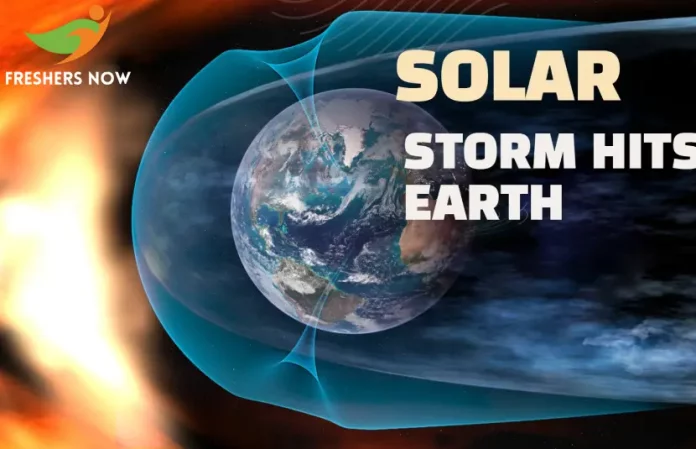
Strong Solar Storm Hits Earth, Filling Skies With Northern Lights: Coronal Mass Ejections (CMEs) are massive releases of solar wind and magnetic fields from the sun’s corona, impacting space and Earth’s magnetosphere. These ejections, carrying billions of tons of plasma intertwined with magnetic fields, play a significant role in space weather.
The Severity of the Recent Geomagnetic Storm
Categorized as “Extreme”: The recent solar storm of 11th May 2024, marked an “extreme” geomagnetic storm, not witnessed since the Halloween Storms of October 2003. This event stirred global attention due to its remarkable impact on various technological and natural phenomena.
Impact on Technologies and Services
Disruptions to Satellite and Power Infrastructure: The extreme solar storm led to fluctuations in Earth’s magnetic field, posing risks to satellite operations and power transmission infrastructure. This situation demanded swift action and preparedness from relevant authorities to mitigate potential disruptions to essential services.
Biological and Cumulative Effects
Beyond Technology: solar storms, such as the recent event, can impact biological entities like pigeons, which rely on Earth’s magnetic field for navigation. Disruptions in their homing abilities during similar past events hint at broader ecological implications.
Scientific Engagement and Public Interest
A Moment for Scientific Engagement: The solar storm presented an opportunity for professionals and enthusiasts to engage with space weather. Academic institutions and space monitoring bodies are guided in safely observing such phenomena, fostering public interest and understanding.
The Historical Significance: The Carrington Event
Compared to the Past: Although severe, the recent storm pales in comparison to the historic Carrington Event of 1859, the most intense solar storm on record. This event, triggered by a massive solar flare, caused widespread disruptions to telegraph systems, highlighting the potential global impact of such phenomena.
Understanding Geomagnetic Storms
Geomagnetic storms are temporary disturbances in Earth’s magnetosphere caused by solar-wind interactions. Rated on a scale from G1 to G5, they can disrupt satellite operations, communication systems, and power grids, while also producing captivating auroras near the poles.
The Beauty of Auroras
Auroras, such as the Northern Lights and Southern Lights, are natural light displays primarily seen in polar regions. These mesmerizing phenomena occur when the solar wind interacts with Earth’s magnetosphere, exciting particles in the atmosphere to emit colorful lights.
Social Media Buzz and Witness Accounts
Social Media Frenzy: The recent solar storm sparked a frenzy on social media, with people sharing awe-inspiring images of auroras from various locations worldwide. Witness accounts, like those from Hertford, Britain, and Tasmania, captured the excitement and wonder of experiencing such a rare celestial event.
Conclusion
In conclusion, the recent extreme solar storm of 11th May 2024, brought attention to the powerful influence of space weather on Earth’s systems. Understanding phenomena like Coronal Mass Ejections, solar storms, and auroras, Northern Lights is crucial for preparedness and appreciation of the natural wonders of our universe.
Stay updated with the latest current affairs and insightful blog posts by following Freshersnow. Don’t miss out on future content that keeps you informed and engaged!
| You Can Also Check | |
| Current Affairs | |



